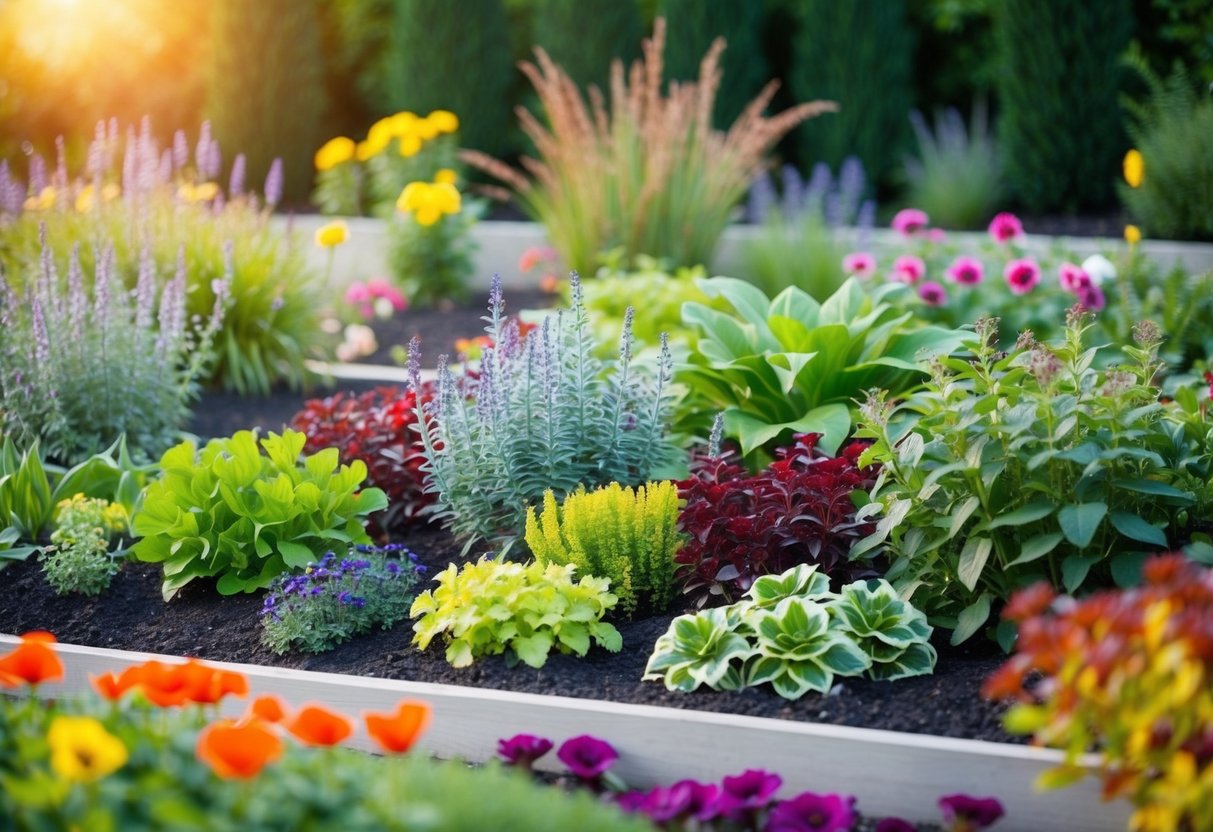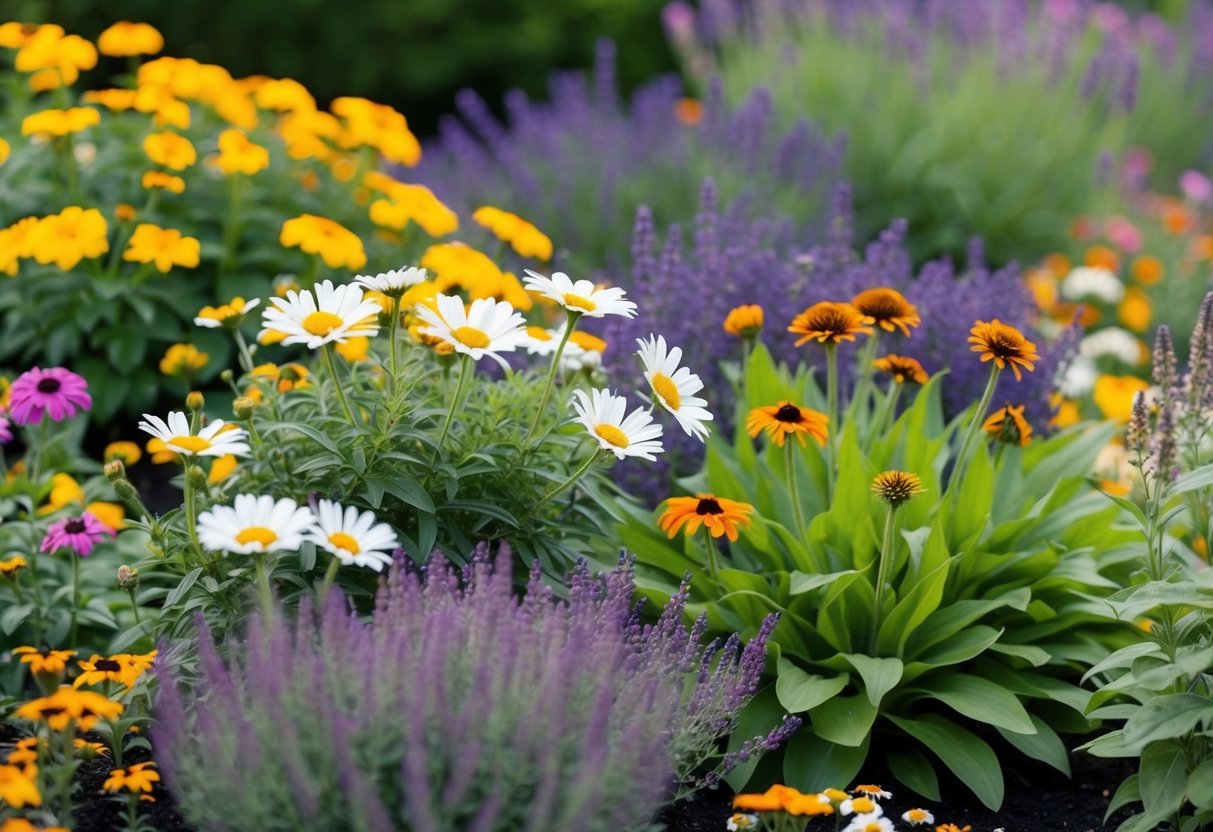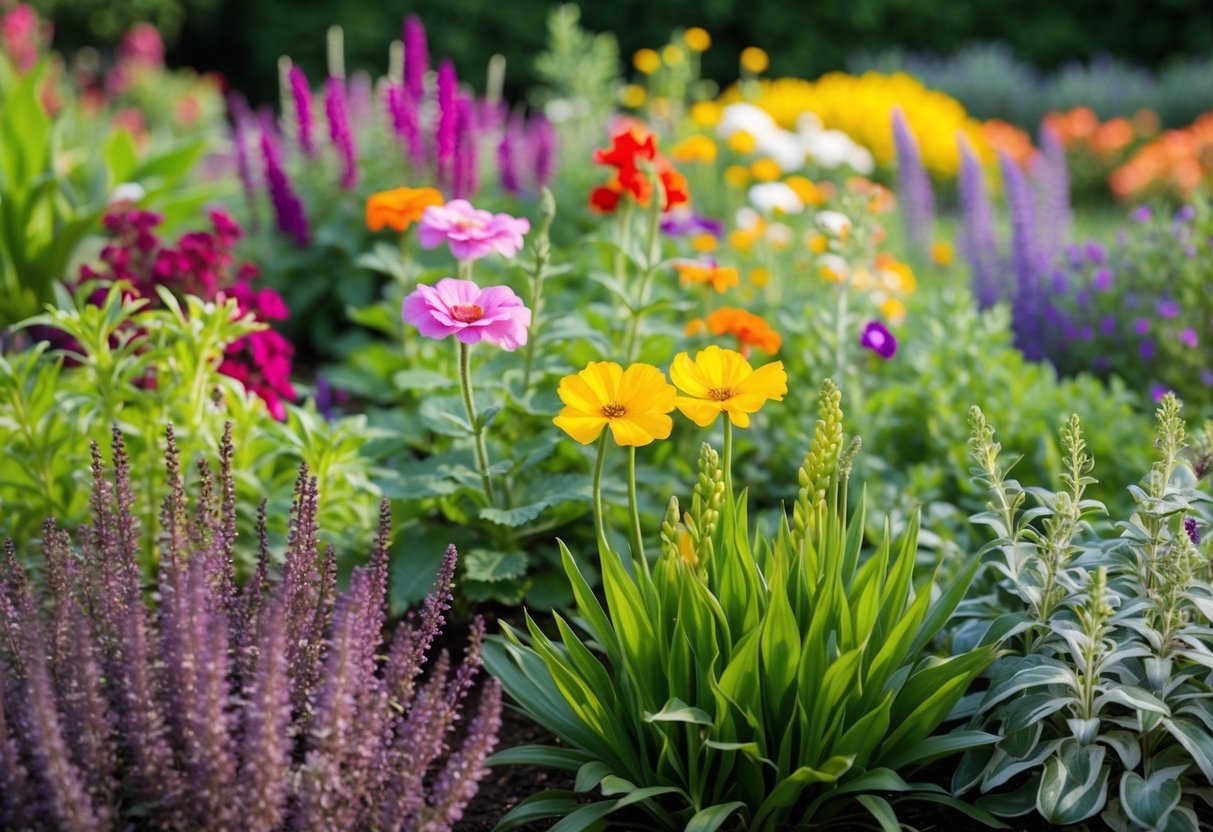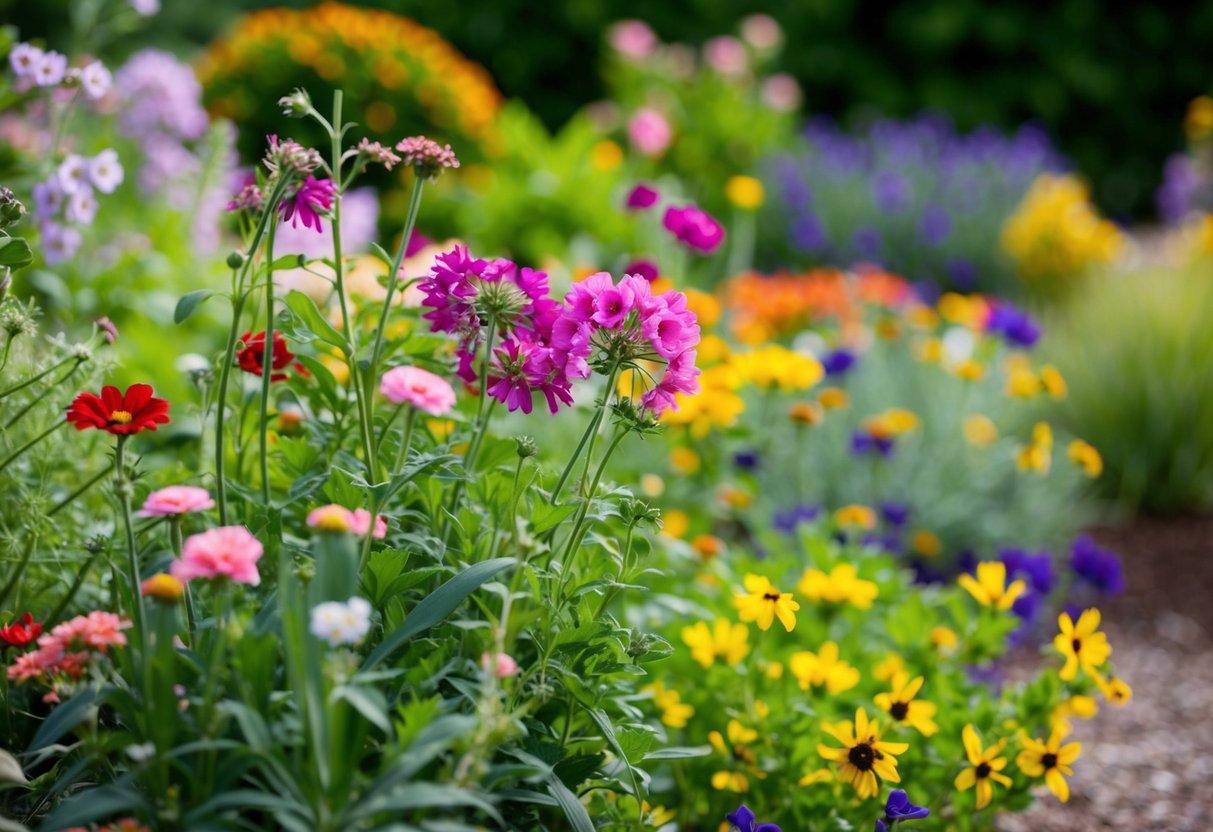Are Any Bedding Plants Perennial? Discovering Long-Lasting Garden Options
When planning your garden, figuring out which plants will thrive year after year can be exciting. You might wonder if any bedding plants can fit this bill. Some bedding plants are indeed perennials, which means they can come back year after year, providing lasting beauty to your garden. These plants are often chosen for their vibrant colors and the lush texture they add to outdoor spaces.

Perennial bedding plants make gardening simpler and more enjoyable. Once established, they require less replanting and maintenance, saving you time and effort. With a bit of planning, you can create a garden that bursts with color every season, thanks to these hardy plants.
Exploring the diverse range of perennial bedding plants can be an exciting journey. From perennials that love the sun to those that thrive in the shade, there are options for every garden environment. By choosing the right plants, you can enjoy a colorful garden year-round without having to constantly swap out your flowers.
Understanding Perennial Bedding Plants

When planning your garden, you might wonder about perennial bedding plants. These are plants that return every year. They offer lasting beauty, reducing the need for yearly replanting.
What Are Perennials?
Perennials are plants that live for more than two years. They die back in winter but return each spring, ready to bloom. This can include flowering perennials like lavender and hydrangea, which provide long-lasting color. Some perennials, such as hostas, are shade perennials and do well in areas with limited sunlight.
There are herbaceous perennials that have soft, pliable stems, while hardy perennials can withstand cold temperatures. Many perennials are low-maintenance plants, perfect for busy gardeners. Others, known as tender perennials, need more care in colder climates.
Benefits of Perennial Bedding Plants
Perennial flowers bring continuous beauty to your garden without the need for frequent replanting. This can save you time and effort each year. Perennial flowering plants can adapt to different environments, making them versatile choices for various garden spots.
These plants are great for year-round interest. In winter, many perennial plants can be pruned to maintain a neat appearance, while in the growing season, they provide lush foliage and blooms. Including perennials in your garden design can also help support local wildlife, as they often attract pollinators like bees and butterflies, enhancing your outdoor space’s ecosystem.
Garden Planning with Perennials

When planning your garden with perennials, consider your yard’s conditions and the specific needs of the plants you choose.
Important factors include sunlight, soil type, and water requirements. By selecting suitable perennials, your garden can thrive with colorful blooms and lush foliage throughout the seasons.
Choosing the Right Perennials for Your Garden
Start by assessing the natural conditions of your garden. If your garden gets full sun, you’ll want perennials that love sunlight. Some great options are daylilies and lavender, which are also drought-tolerant once established.
Consider the soil as well. Perennials like coneflowers and yarrow prefer well-drained soil. If your soil retains too much water, you might need to improve drainage.
Don’t ignore the shady areas of your garden. Plants like hostas and ferns thrive as shade perennials.
Incorporating native wildflowers can enhance your garden’s health and appearance. These plants are already adapted to your local environment, making them resilient and easy to care for. With careful selection, your perennial garden can be a vibrant, long-lasting ecosystem.
Popular Perennial Bedding Plants

Perennial bedding plants offer beautiful blooms year after year. Whether your garden gets full sun or sits in the shade, there are plants that thrive in those conditions. Below, you’ll find recommendations for both sun-loving and shade-tolerant perennials.
Sun-Loving Perennials
If your garden spot enjoys lots of sunshine, sun-loving perennials are perfect for adding color and life. Daylilies are a fantastic choice. They come in various colors and bloom throughout the summer.
Consider planting bee balm, which attracts pollinators like bees and butterflies, while lavender adds fragrance and a calming presence.
Coreopsis and yarrow offer lovely yellow blooms and can withstand dry conditions. Black-eyed Susan and coneflowers bring vibrant bold yellows and purples to your garden. Salvia and catmint are great for edging and lend a touch of blue or purple. For those who enjoy something taller, Russian sage offers stunning silvery foliage and lavender-blue flowers.
Liatris spicata is another sunny favorite with its upright spike-like blooms. Many of these plants also make excellent cut flowers, bringing your garden’s beauty indoors.
Shade-Tolerant Perennials
Many perennials thrive in shady spots, making them great for gardens that don’t get much sun. Hostas are popular for their lush green leaves and variety of sizes.
Astilbe and bleeding heart produce delicate flowers that brighten darker areas.
Hellebores provide early spring blooms even before winter’s end. Heuchera, or coral bells, add color with their reddish foliage, and ajuga offers dense ground cover with blue spikes. Ferns and cledistum can add texture.
Hydrangeas and bleeding heart add both beauty and charm with their unique blooms. Shade-friendly plants are perfect for spots underneath trees or on the north side of houses, providing lush growth where other plants may struggle.
Creating a Perennial Garden

Planting a perennial garden is a rewarding way to enjoy flowers year after year. You’ll learn essential planting tips and discover how perennials can attract pollinators to your garden.
Planting and Maintenance Tips
When planting perennials, choose a variety that fits your garden’s light conditions. Shade perennials like hostas and ferns thrive without direct sunlight. For sunny spots, consider daylilies or coneflowers.
Improve soil quality by adding organic matter such as compost. This enriches the soil, helping retain moisture and nutrients.
Regular mulching also conserves moisture and limits weeds.
As your perennials grow, deadheading spent flowers encourages more blooms. It keeps the plants tidy and promotes a longer flowering season.
Check the growth and spread of your plants. Thin them if they get too crowded to ensure each plant has enough space to thrive.
Attracting Pollinators with Perennials
Creating a perennial garden can help attract pollinators like bees, butterflies, and hummingbirds.
Bright blooms such as bee balm, black-eyed Susans, and lavender are excellent choices for this purpose.
Consider planting in clusters. This makes it easier for pollinators to spot your flowers.
Include plants with different blooming times to provide nectar throughout the season.
Using a mix of heights and varieties creates diversity. This appeals to a range of pollinators and adds visual interest.
Incorporating ground covers like creeping thyme also supports pollinators while filling garden spaces with color and texture. These efforts enhance the beauty of your garden and support the ecosystem by welcoming essential visitors.
Comparing Perennials with Annuals

When you’re deciding between perennials and annuals for your garden, it’s important to think about the lifespan and maintenance of the plants, as well as when each type might be preferable for your gardening needs.
Perennials vs. Annuals: Lifespan and Care
Perennials and annuals differ mainly in how long they live. Perennials are plants that come back year after year, going dormant in the winter and regrowing in the spring. They range from hardy plants that withstand cold temperatures to more delicate types like daffodils and tulips. These plants often require less replanting work once they are established.
On the flip side, annuals complete their life cycle in one year. You plant them in the spring, enjoy them through the warm months, and they die out come winter. This means they need more frequent replanting, but their vibrant colors can brighten any garden like a burst of fireworks. They can also be a good option if you want to change things up each year.
When to Choose Annuals Over Perennials
Choosing annuals over perennials can be a good idea if you’re looking for flexibility. Annuals only last for a single growing season, so you can change your garden’s look more easily from year to year. This is particularly useful if you like experimenting with different colors or arrangements.
In the case of spring bulbs like tulips, some gardeners treat them as annuals since they don’t always return the following year. If you’re keen on having plants that bloom all summer long, annuals are often your go-to choice. They can easily fill garden gaps, adding vibrant color as you mix and match with other plants.







